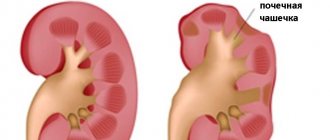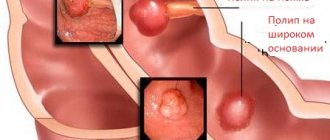Ureaplasmosis in men is an infectious disease of the genitourinary organs caused by opportunistic bacteria Ureaplasma urealyticum and Ureaplasma parvum.
Male ureaplasmosis is often characterized by a long asymptomatic course, carriage of the pathogen and manifestation already at the stage of development of chronic diseases of the reproductive system.
Ureaplasmas are currently not classified as sexually transmitted diseases; their pathogenicity is conditional, that is, it manifests itself under certain conditions. This is mainly a decrease in immunity and an increase in the number of these bacteria on the mucous membranes of the urethra, bladder, as well as in the prostate, seminal vesicles and testicles.
Ureaplasmosis in men, symptoms and treatment are still the subject of debate among venereologists, urologists and gynecologists. It is often quite difficult for even a specialist to figure out whether these symptoms of genitourinary organ disease in men are the result of a ureaplasma infection, and whether a man needs immediate treatment if ureaplasma is detected by laboratories.
It is reliably known that these microorganisms can participate in the development and maintenance of the inflammatory process, but their asymptomatic carriage is also often observed, which does not harm the man at the moment, but contributes to the transmission of this infection to his sexual partners.
Ureaplasmosis in men causes of occurrence
Ureaplasma is a sexually transmitted infection. A man becomes infected during sexual intercourse. Most often this is classic vaginal contact, but in some cases infection can occur during oral or anal sex.
The entry of ureaplasma into the urethra, oropharynx or rectum does not immediately cause any unpleasant sensations. The incubation period can last from 2 weeks to several years. Symptoms occur either when a significant number of bacteria enter the mucous membranes, or when a man has a sharp decrease in immunity, against the background of which ureaplasma actively multiplies.
If ureaplasma is not detected by laboratory methods for a long time, then it spreads to the internal organs of the male reproductive system - the prostate, seminal vesicles, epididymis. In these cases, the first symptoms of ureaplasmosis may be precisely the signs of prostatitis, vesiculitis and orcho-epididymitis.
That is, the main causes of ureaplasmosis in men as a disease are:
- Infection with Ureaplasma urealyticum and Ureaplasma parvum during sex.
- Decreased immunity.
- Development of chronic inflammatory diseases of the genitourinary organs.
Symptoms of ureaplasmosis in men depend on where ureaplasma is actively multiplying at the moment, and what complications have developed against the background of this inflammatory process. As noted above, the disease often occurs in a latent form and does not cause any concern to the patient; it remains undetected for a long time.
If acute ureaplasmosis develops in the first 2–3 weeks after infection, then the following signs of this STD appear:
- Itching in the urethra.
- Slight discomfort or slight burning sensation when urinating.
- Scanty mucous discharge from the urethra.
- Redness and swelling of the urethral sponges.
These symptoms do not last long. Sometimes a man does not see a doctor, the symptoms go away, and the disease turns into a sluggish chronic form.
The development of a chronic process can occur without an acute phase, but may occur immediately after infection. That is, ureaplasmosis at first occurs latently, and its symptoms begin to worry after the formation of chronic urethro-prostatitis and other problems in the male reproductive system after several months or years. These symptoms are characterized by less intensity compared to the acute process and depend on the affected organ. They do not bother a man constantly, but appear during exacerbations associated with hypothermia, drinking alcohol, spicy food, decreased immunity, after intense sex and taking potency-stimulating drugs.
Basic information:
Ureaplasma is a genus of bacteria that occupies an intermediate position between viruses and single-celled microorganisms. This is an opportunistic microflora that can cause inflammation of the mucous membranes of the human genital organs and urinary tractii.
Opportunistic infection:
- found in most healthy people. The prevalence of microorganisms is evidenced by the following indicators: these bacteria are detected in most people (up to 80%), while the pathological course is usually no more than ten percent)iii
- Children's age of carriers does not exclude the possibility of detection of Ureaplasma
- may not be present in everyone from among those with whom the carrier entered into intimate relationships
- there are difficulties in complete elimination from the body; after several courses of antibacterial therapy, microbes may be detected again.
Microorganisms of this genus were discovered as a result of scientists' study of the microflora of the urogenital tract in the sixties of the last century. It has been suggested that the presence of Ureaplasma is one of the possible causes of the development of inflammatory diseases in this area. Then interest in the discovery decreased due to diagnostic difficulties (the small size of the bacterium and the inability to grow in a nutrient medium) and reappeared with the advent of the PCR (polymer chain reaction) method. The indication for treatment is the presence of clinical and laboratory signs of the inflammatory process. Previously, when identifying Ureaplasma spp. in the amount of 10 to the fourth degree CFU (colony forming units) and more, monotherapy with antibiotics was prescribed, but today this standard has changed: in some cases immunomodulators are added, especially if one course of antibiotics was not enoughiv.
Symptoms of chronic ureaplasmosis in men
| 1 | Chronic ureaplasma urethritis | Mild discomfort in the urethra, aggravated by urination Mucous, cloudy, scanty discharge from the canal, sometimes unnoticeable Sticking of the sponges of the urethra in the morning, their slight swelling |
| 2 | Chronic ureaplasma prostatitis | Increased urination, decreased volume of single portions of urine Difficulty urinating Slight nagging, aching pain above the pubis, in the perineum, in the groin. Can give into the penis. Scanty discharge from the urethra Mucus flakes in the urine Premature ejaculation, decreased sexual function. |
| 3 | Chronic urealpasm vesiculitis (inflammation of the seminal vesicles) | Symptoms of prostatitis Pain during ejaculation Appearance of blood in semen Pain to the right or left of the suprapubic region, depending on which vesicle is inflamed and stretched with inflammatory fluid |
| 4 | Chronic epididymitis or orcho-epididymitis (damage to the epididymis and the testicle itself) | Slight swelling of the scrotum Increased size of the epididymis or both appendages Pain, discomfort in the scrotum Pain on palpation (touching) of the epididymis Dense epididymis on palpation Decreased potency, infertility |
| 5 | Chronic cystitis | Pain when urinating Increased frequency of urination Pain above the pubis There are threads of mucus in the urine and there may be blood in it |
| 6 | Chronic proctitis - inflammation of the rectum | Itching in the anal area Burning or pain during bowel movements Redness and swelling of the anal folds Mucusy discharge from the anus |
| 7 | Chronic pharyngitis - inflammation of the pharynx | Discomfort in the throat, manifested when swallowing Expectoration of mucus Redness of the mucous membrane of the palatine arches, the back of the pharynx |
The last two diseases are extremely rare. Most often, men present with chronic ureaplasmosis at the stage of prostatitis or damage to the scrotal organs.
Diagnosis of ureaplasmosis in men is carried out comprehensively using laboratory and instrumental methods.
Directly to identify the pathogen Ureaplasma urealyticum and Ureaplasma parvum, various tests for ureaplasmosis are used. Ultrasound, magnetic resonance imaging or computed tomography are used to determine the extent of damage to the internal male genital organs, an increase in their size, the formation of scars, stones, and cysts.
Tests for ureaplasmosis
Ureaplasmas live on mucous membranes, so direct methods for identifying them are various scrapings from the surface of these membranes and biological fluids. They also often look for antibodies to these bacteria in the blood.
A man examined by a venereologist for ureaplasma infection can test:
- Urethral scraping
- Prostate secret
- The secret of the seminal vesicles
- I'm pissing
- sperm
- Anal canal scraping
- Scraping from the mucous membrane of the oropharynx
- Blood from a vein
What material is best sent for research will be determined by a urologist or venereologist at an appointment, based on examination and medical history. Of course, this entire set of tests is not prescribed to all patients in a row. For each clinical situation, its own diagnosis is selected.
The collection of material from the urethra, rectum and pharynx is carried out in modern conditions with a disposable urogenital probe capable of capturing the required amount of epithelial cells, mucus and other secretions and minimally damaging the surface of the mucous membrane.
For men who are not ready to experience pain during material collection, a painless method of material collection is used, which involves local anesthesia of the urethral mucosa or urine collection after massage of the urethra.
Blood is taken from a vein using disposable needles and vacuum tubes. The puncture is practically invisible to the patient and does not cause pain or discomfort.
Urologists
Erkov Igor Viktorovich
Urologist andrologist
Cost of admission 2500
₽
Make an appointment
Fomenko Alexander Pavlovich Urologist andrologist
Cost of admission 2500
₽
Make an appointment
What tests are done for ureaplasmosis in men in the clinic?
To identify the pathogen, all methods known to modern medicine are used. Scrapings, urine, semen, secretions of the prostate and seminal vesicles are examined using the following methods:
- Qualitative PCR analysis - detects DNA of each type of ureaplasma. The most common method for diagnosing ureplasmosis. The analysis takes 1 day. The price of analysis for ureaplasmosis is 300 rubles for 1 type of ureaplasma.
- Quantitative PCR analysis detects not only the presence of infection, but also determines its quantity, which is important for developing treatment tactics and monitoring the effectiveness of therapy. It takes 1–2 days. Costs 750 rubles.
- Culture for ureaplasma reveals the presence of the microorganism, its quantity and sensitivity to antibiotics. The analysis is the “gold standard” and is very important in the treatment of chronic forms, especially if previous therapy has failed. Completion time 7 days. Costs 1900–2100 rubles.
A blood test for ureaplasma is an ELISA - an enzyme-linked immunosorbent assay that detects antibodies to the pathogen: IgG, M, A. This is an indirect diagnosis that characterizes the reaction of the immune system to the presence of a pathogenic bacterium. The complex of these immunoglobulins is assessed. It is not always possible to judge the presence of infection and its activity using one indicator. Only an experienced venereologist can figure it out.
IgG mainly indicates the presence of a chronic infection or a previous illness.
IgM indicates an acute fresh infection, a recent infection.
IgA indicates the persistence of infection in the body.
Blood tests help in diagnosing ureaplasmosis when PCR or culture is negative, and also to assess the immune response.
In addition to specific tests for ureaplasma, to establish a diagnosis, the results of microscopy of a smear from the urethra and prostate secretion are used, which determine the presence and severity of the inflammatory process in the genitourinary tract, which is important for deciding on treatment.
How to diagnose the disease
Two tests help identify ureaplasma urealiticum in men: PCR and bacterial culture. In the first case, ureaplasma is indicated by the presence of DNA of this organism in the smear. Cultivation of bacteria makes it possible to identify them in the environment and establish the sensitivity of the strain to certain groups of drugs. In addition, the doctor may order the following tests:
- ELISA;
- spermogram;
- microbiological examination of sperm.
Based on your medical history, tests for other pathogens may be prescribed.
Ureaplasmosis in men treatment
The situation with the treatment of ureaplasma is twofold. On the one hand, if there are no complaints, signs of inflammation and the amount of ureaplasma is less than 10*4 degrees, then according to modern ideas, a man or woman can be left under observation with periodic testing for ureaplasmosis and inflammation.
On the other hand, such a patient becomes a source of infection for his sexual partners. It is also possible that the pathogen will multiply rapidly with decreased immunity, which will cause chronic prostatitis and other complications.
The choice is up to the man himself, to treat or not to treat. But, if possible, it is better to get rid of the infection.
Treatment of ureaplasmosis in men, treatment regimen
Treatment of ureaplasmosis is complex and includes drug therapy and various medical procedures.
The treatment of acute and chronic ureaplasmosis has some differences, especially in the presence of complications such as prostatitis, vesiculitis, cystitis and epididymitis.
Treatment of an acute process mainly involves the use of antibacterial drugs with proven effectiveness against ureaplasma. Of course, in an ideal situation, when culture results are available, it is best to use antibiotics to which the sensitivity of these pathogens has been determined in a particular patient. But most often the doctor only has PCR diagnostic data, where you can only see the presence and quantity of bacteria.
Therapy lasts 7–10 days. Medicines can be administered either in tablet form or intravenously (some macrolides and fluoroquinolones). Tablets are easier and more convenient for the patient; treatment is carried out at home. Droppers are more effective, faster and have less impact on the intestinal microflora and liver.
Any treatment of ureaplasmosis in men should be carried out under the supervision of a doctor and involves mandatory control tests 3 weeks after stopping the medication.
Control is especially important when treating with tablet forms of antibiotics, because ureaplasma may not completely disappear from the body.
The almost acute form of ureaplasmosis is very rare. Even after a fresh infection with this infection, symptoms are mild or absent. Therefore, most often venereologists or urologists prescribe treatment for ureaplasmosis according to chronic process schemes, because latent ureaplasma infection does not respond well to antibiotics without the use of an integrated approach, including not only drug therapy, but also various procedures, depending on the degree of spread of ureaplasma throughout the male genitourinary system .
What antibacterial drug is best to treat ureaplasma?
The choice of drug (daily dose, frequency of administration and duration of treatment) is influenced by many factors (chronic diseases, current use of medications, pregnancy, effectiveness of previous treatment, etc.) According to the Clinical Guidelines of the Russian Society of Dermatovenerologists (and Cosmetologists) [1] , for the treatment of diseases caused by Ureaplasma urealyticum
, it is enough to take
one antibiotic
(dispensed from pharmacies only with a doctor’s prescription), the active substance of which is josamycin (for example, Vilprafen) or doxycycline (for example, Unidox Solutab). However, ureaplasma is also highly sensitive to some other antibiotics, for example, azithromycin [2] (Table Sumamed), as well as clarithromycin (Table Klacid) and roxithromycin (Tab. Rulid). The effectiveness of treating ureaplasma with the above antibiotics is (without the use of immunomodulators and other ineffective drugs) at least 88%. There are drugs whose microbiological effectiveness in the treatment of ureaplasmosis is 100%, but these drugs are prescribed only when other drugs have been ineffective, as they have many side effects. The doctor’s selection of an antibiotic for the treatment of ureaplasmosis is carried out individually; self-medication can lead to unpredictable consequences!








